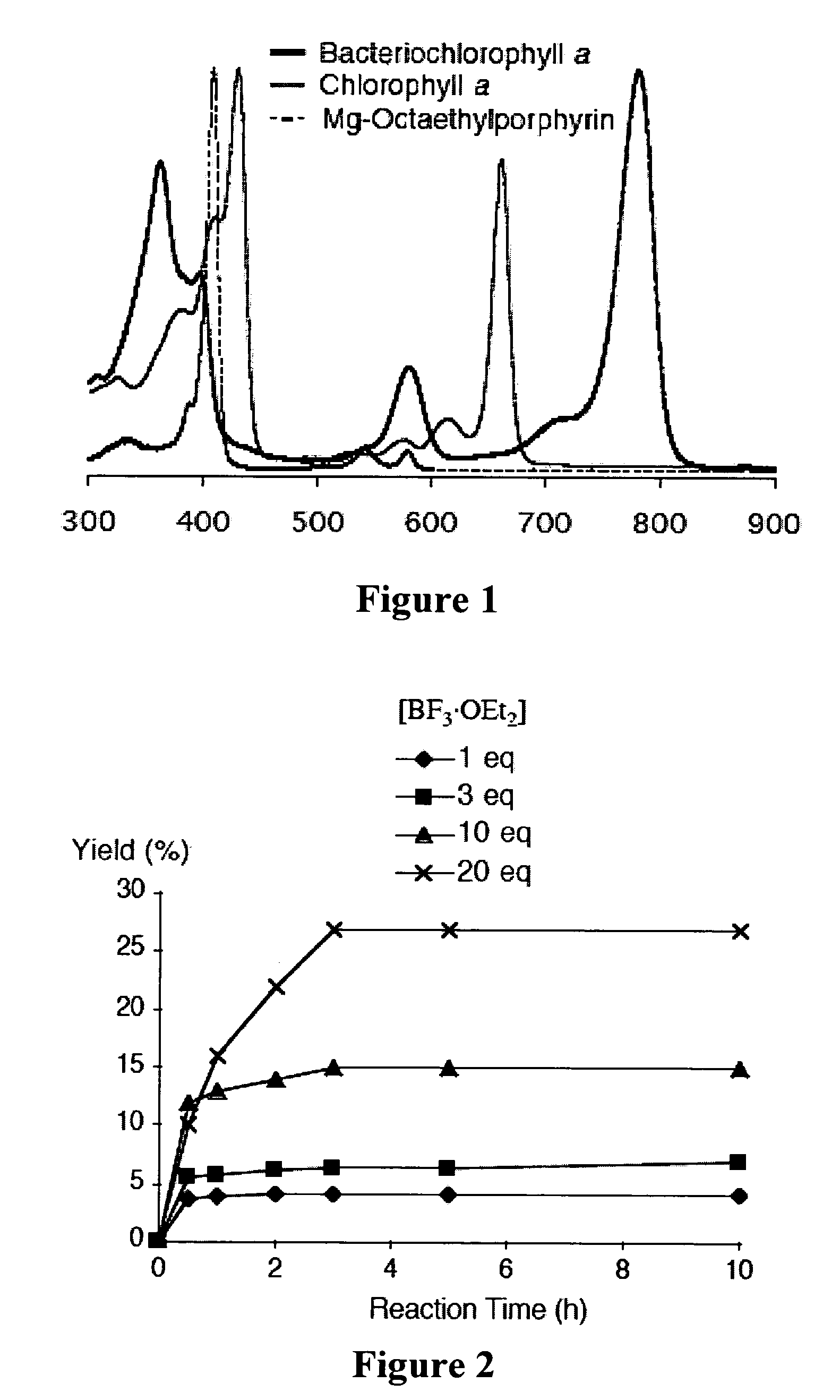De novo synthesis of bacteriochlorins
a technology of bacteriochlorin and synthesis, applied in the field of bacteriochlorins, can solve the problems of reducing the synthesized flexibility of bacterial ochlorin, reducing the synthesis efficiency, and pronounced dehydrogenation
- Summary
- Abstract
- Description
- Claims
- Application Information
AI Technical Summary
Benefits of technology
Problems solved by technology
Method used
Image
Examples
example 2
Bacteriochlorins Via a Dihydrodipyrrin-Carboxaldehyde
[0365]Recently and as described above, we developed a concise synthetic route to stable bacteriochlorins (Kim, H.-J.; Lindsey, J. S. J. Org. Chem. 2005, 70, 5475-5486). The synthesis employs the self-condensation of a dihydrodipyrrin-acetal. Here we describe a new synthetic route to bacteriochlorins. The new route involves oxidation of a dihydrodipyrrin to give the corresponding dihydrodipyrrin-aldehyde, which undergoes self-condensation to give free base bacteriochlorins (H-BC and an unidentified-BC) and a tetradehydrocorrin-aldehyde. The new route can be used as an alternative route for bacteriochlorin synthesis. Use of the aldehyde rather than the acetal affords a number of advantages.
Results and Discussion
[0366]1. Approach. In our previous work, we prepared a number of hydrodipyrrins and examined the reactivity of those hydrodipyrrins to find synthetic routes to stable bacteriochlorins. Three prototypical target hydrodipyrrin ...
PUM
| Property | Measurement | Unit |
|---|---|---|
| temperature | aaaaa | aaaaa |
| concentration | aaaaa | aaaaa |
| body weight | aaaaa | aaaaa |
Abstract
Description
Claims
Application Information
 Login to View More
Login to View More - R&D
- Intellectual Property
- Life Sciences
- Materials
- Tech Scout
- Unparalleled Data Quality
- Higher Quality Content
- 60% Fewer Hallucinations
Browse by: Latest US Patents, China's latest patents, Technical Efficacy Thesaurus, Application Domain, Technology Topic, Popular Technical Reports.
© 2025 PatSnap. All rights reserved.Legal|Privacy policy|Modern Slavery Act Transparency Statement|Sitemap|About US| Contact US: help@patsnap.com



